Austrian hydropower experts supply high-performance technology for Taiwan‘s Hushan hydropower plant
In February 2025, the internationally renowned GUGLER Water Turbines GmbH successfully completed its first project in Taiwan. The Austrian industry specialists supplied the complete electromechanical and control system equipment for the new construction of the Hushan small hydropower plant of the operating company AES Mega, a pioneer of closed-loop small hydropower plants in Taiwan who conducted the feasibility study, basic design, PCM, and EPC of the project. The centrepiece of the power plant is a highly efficient Francis turbine, which achieves a maximum output of 1657 kW at full water supply. The exemplary plant was built next to the water treatment plant of the Taiwan Water Company Yunlin, which is supplied from the nearby Hushan reservoir. In addition to the powerful technology, the power plant also boasts an extremely attractive appearance with its wooden structures. The success of the project reflects the excellent teamwork between the European company GUGLER and the Taiwanese company AES Mega, combining technological expertise and local know-how to deliver a showcase hydropower installation.
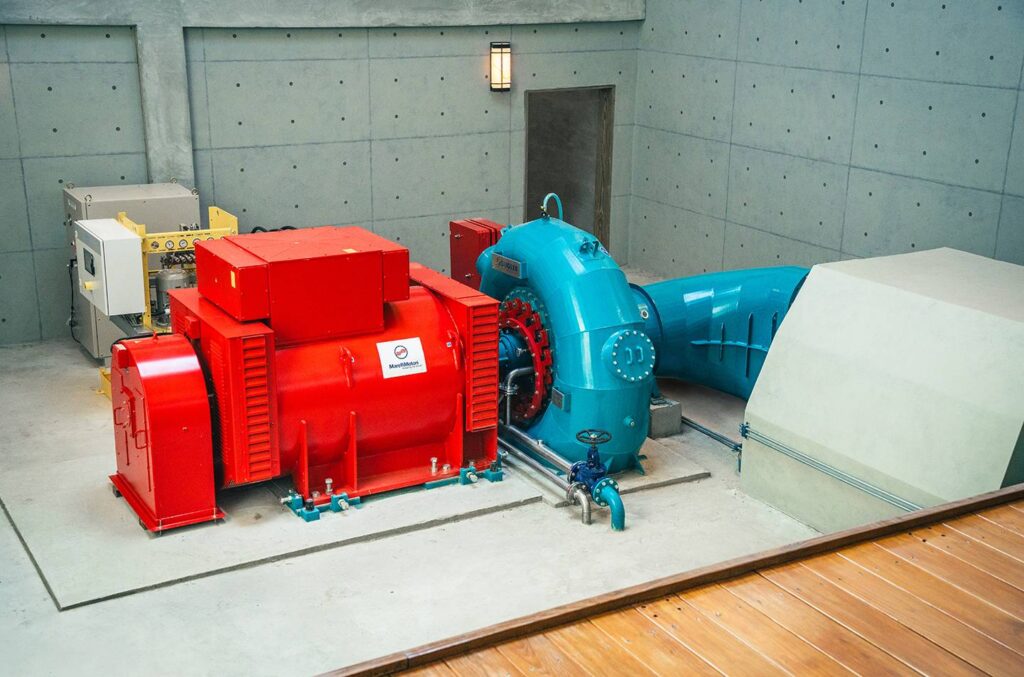
© AES Mega
The island state of Taiwan, which has around 23 million inhabitants and is located around 130 kilometres east of the Chinese coast, has ideal conditions for generating electricity from hydropower due to its abundance of water and mountainous landscape. Despite these favourable conditions, hydroelectric power production in Taiwan only plays a very minor role. According to the online portal „lowcarbonpower.org“, around 83 per cent of the electricity generated in Taiwan in 2024 came from fossil fuels such as coal and natural gas. Only 3 per cent of electricity was generated by hydropower plants, while photovoltaics and wind energy were also far behind with a share of 4 per cent each. Despite these sobering figures, there are strong endeavours in the country to promote the use of renewable forms of energy.
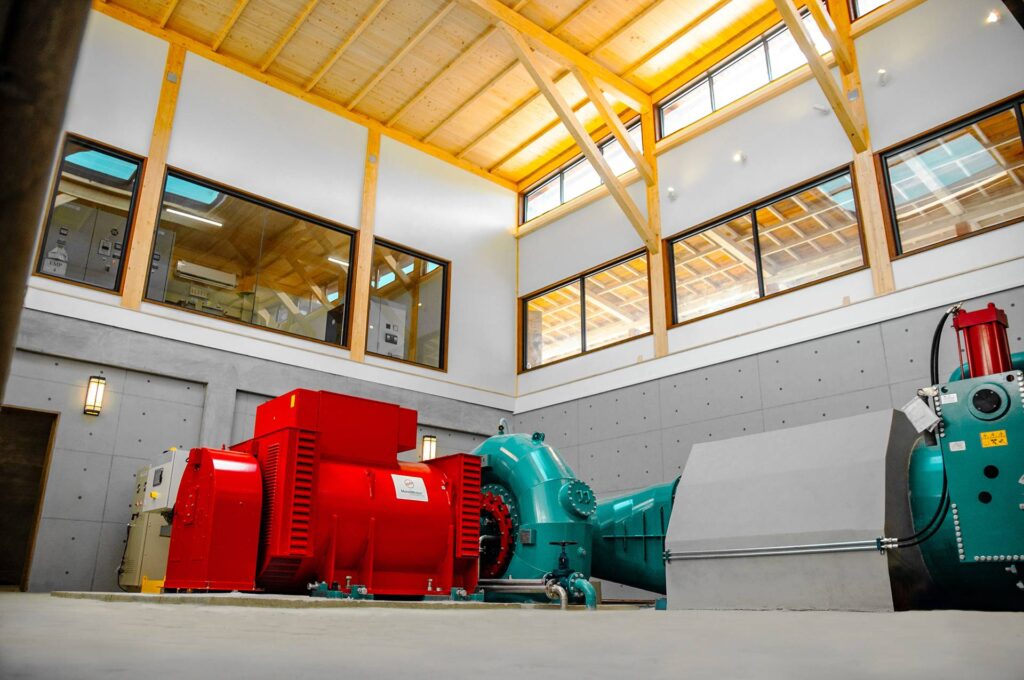
© AES Mega
First reference project in Taiwan
AES Mega, which was founded in 2018, is one of the biggest proponents of Taiwan‘s energy transition. The company, which is based in the capital Taipei, specialises in the use of sustainable energy, including the construction of hydropower plants and geothermal energy systems. Only recently, AES Mega‘s latest own hydropower plant, which was built in the western part of Taiwan near the city of Douliu, produced clean electricity for the first time. The Upper Austrian hydropower all-rounder GUGLER Water Turbines GmbH played an important role in the technical realisation of the Hushan power plant, qualifying for the international tender to supply the machine set, says GUGLER project manager Markus Weglehner: „The project was a premiere for us: We were able to demonstrate our expertise in Taiwan for the first time. In principle, the order comprised the realisation of the complete electromechanical equipment. This included a Francis turbine including generator, two hydraulic units, four butterfly valves and the power plant control system.”
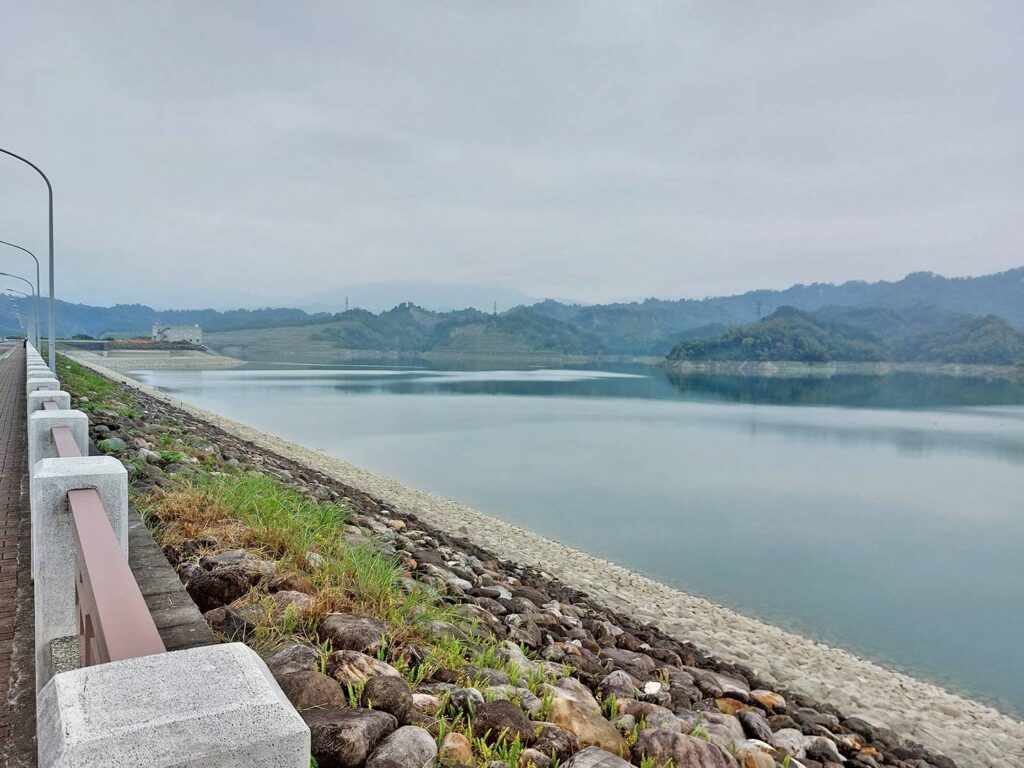
© GUGLER
Power generation and drinking water supply combined
The new hydropower plant from AES Mega utilises the hydroelectric potential of the Hushan reservoir, which was built to supply drinking water to the district of Yunlin. The reservoir, which has a capacity of over 52 million cubic metres, was created by the construction of the 75-metre-high Hushan dam and was officially inaugurated in 2016. Around five kilometres from the dam is the state-operated drinking water treatment plant of the Taiwan Water Corporation Yunlin, next to which the new small hydropower plant was built. „The general operating principle of the Hushan power plant is not complicated. After the water is discharged from the Hushan reservoir, it is utilised for the first time by a slightly older power plant to generate electricity. After turbining, the water flows to a relatively large stilling basin, which is connected to a penstock. This DN1800 power descent finally leads to the treatment plant or the newly built hydropower plant,“ explains the project manager.
Bypass is required
According to Markus Weglehner, connecting the turbine to the existing penstock involved some additional work: „Normally, a turbine draft tube has the technical freedom to be turned a few centimetres to the left or right, as it flows into an unpressurised channel anyway. However, this was not the case at the Hushan power plant because the pipework leading to and from the turbine was already in place. These circumstances made additional clarification necessary during the construction phase so that the machine could be fitted exactly between the two pipe axes.“ The integration of the new hydropower plant into the existing penstocks also required the installation of a bypass system. The bypass, for which GUGLER supplied three additional butterfly valves, ensures that the treatment plant can be constantly supplied with water even in the event of a power plant shutdown or mandatory maintenance work.
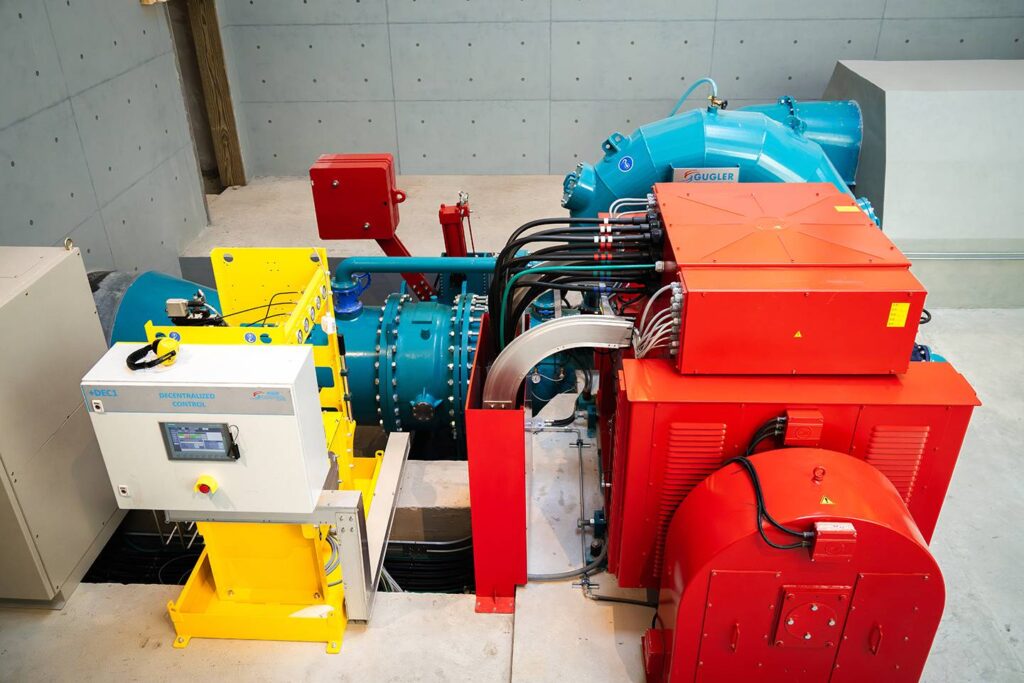
© AES Mega
Francis turbine with high efficiency
With an expansion water volume of 3 m³/s and a net head of 60.7 m, the use of a horizontal-axis Francis turbine was the ideal option for the Hushan power plant, according to Markus Weglehner. The machine, which achieves a nominal output of 1657 kW at full water supply, guarantees the operators the best efficiency and consistently effective electricity production. The machine set is completed by an air-cooled synchronous generator from the Italian manufacturer Marelli, which is directly coupled to the turbine runner. Equipped with roller bearings, the generator was designed for an operating voltage of 690 V and a rated apparent power of 1870 kVA. For the manufacture of the turbine, GUGLER relied on proven European partner companies with decades of experience in the mechanical engineering sector. Following factory acceptance in the presence of a customer representative, the machine, which was delivered largely pre-assembled, was packed seaworthy and sent on its journey to Taiwan by ship. „Due to the unstable security situation off the coast of Yemen, caused by activities of the Houthi rebels, an alternative shipping route around the African continent was selected for safety reasons. Despite the extended sea voyage from Europe to Asia, which took nearly three months, the overall project schedule was successfully maintained,“ Markus Weglehner noted.The installation of the machine set and the various technical trades in the powerhouse took place from mid-2024 and was carried out in several stages by local personnel under the guidance of a GUGLER supervisor. In addition to the electromechanical equipment, GUGLER‘s scope of delivery also included the power plant control system, which ensures the fully automatic operation of the plant. GUGLER subsidiary H&W Control GmbH, also from Austria, was responsible for programming the control technology with intuitive visualisation. The system can be controlled and monitored either in the machine building on the control technology PC or in the AES Mega control centre in Taipei via a secure online connection. The electrical components such as the medium-voltage switchgear, protective devices and transformers were installed by the operating company itself.
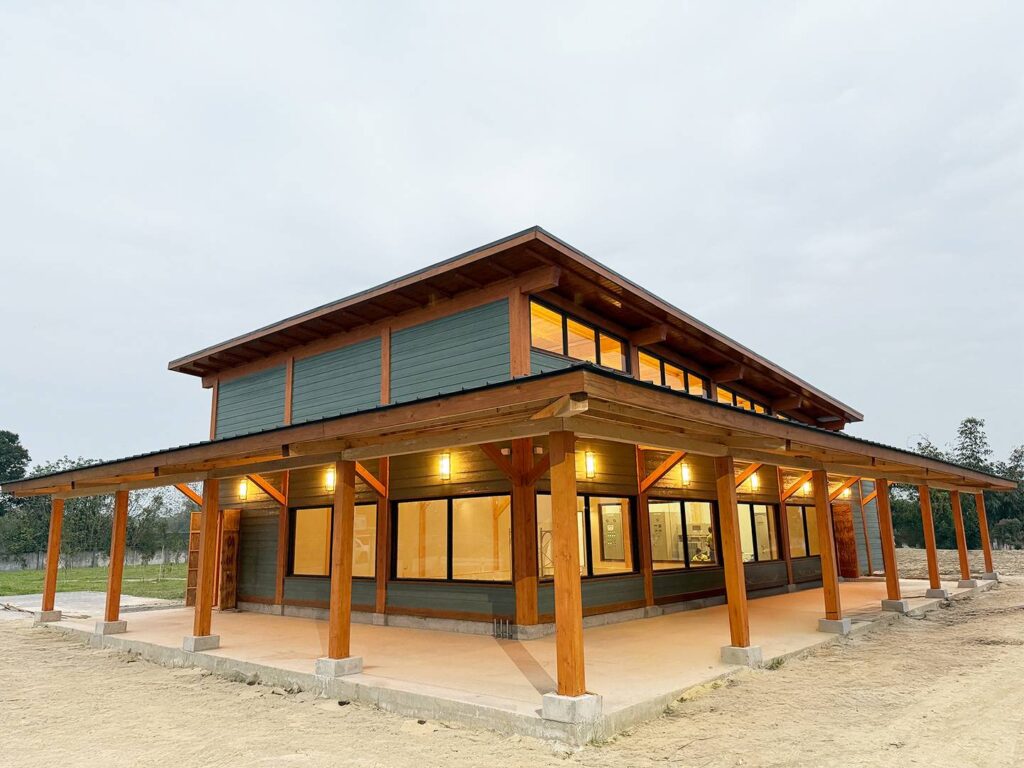
© GUGLER
Impressive system inside and out
„After the final installation work, it was finally time for the commissioning process in February 2025. Extensive mechanical and electrical tests and checks were carried out as part of our standardised commissioning protocol. The findings with regard to the functionality and confirmed performance potential of the system were extremely satisfying for both us and the representatives of AES Mega. I believe that we made a very good impression during our first deployment in Taiwan,“ emphasises Markus Weglehner. Speaking of good impressions: the project manager points out that during the realisation of the Hushan power plant, great importance was placed not only on the high-performance technology, but also on the attractive appearance of the plant. Japanese architect Hojo Kenji was responsible for the attractive appearance of the machine building with its large glass façades, which give visitors to the power plant an unobstructed view of the modern hydroelectric technology inside.